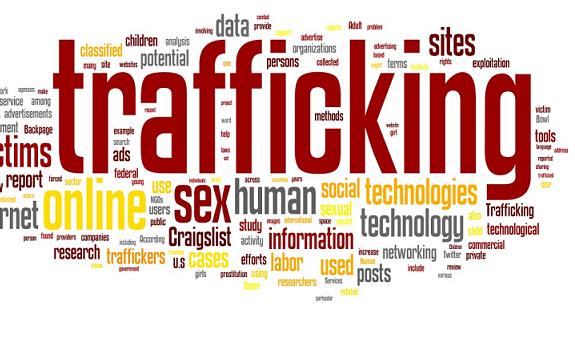10 ways to recognize modern slavery
One of the biggest obstacles to tackling modern slavery is that it’s often hiding in plain sight. To better understand how that happens, here is a list of ten situations, whish suggests 50forfreedom.org blog to recognize that people are in forced labour.
1. THEY’VE BEEN TRICKED
Many victims of modern slavery are deceived into accepting what sound like good opportunities at first, but turn out to be lies. Consider this example from Zambia: a young woman was promised a job as a waitress in Europe, but found out once she arrived that there was no job and that her future boss was a pimp. She was raped, beaten and forced to work as a prostitute with nowhere to turn for help.
2. THEY’VE BEEN ISOLATED
Victims can be isolated physically and forced to work in remote locations or simply prevented from communicating with friends, family or anyone else who speaks their own language. For example, a Chinese housekeeper in France was made to work 365 days a year and was forbidden from leaving the house. The labour inspectors who found out about her situation said that she’d been cut off from her relatives in China and spoke almost no French at all. She had no one to talk to and no way to ask for help.
3. THEIR PASSPORTS HAVE BEEN TAKEN AWAY
Confiscating passports or other important documents is a common means of coercing workers into accepting poor living and working conditions. For example: a man from Nepal who worked as a clear in the Middle East says that he was prevented from leaving his job or returning home by his employer, who seized his passport and refused to give it back. Without it, he couldn’t travel home or even go to the police for fear of being arrested for not having a visa.
4. THEY’RE WORKING OFF A DEBT
Many victims of forced labour are trying to pay off a debt. It’s no ordinary debt though—as the victim has no power to negotiate the terms, which can change at the discretion of the “lender” and be passed down from generation to generation. This is called debt bondage and it’s especially common in Southern Asia.
Consider this story from Pakistan about a man who wound up in bonded labour after borrowing the equivalent of US$ 200 from a moneylender. After he’d paid all but $50 of it back, the moneylender insisted the loan had actually been for $400. The man couldn’t prove the moneylender was lying, so he was forced to work for him in a mine in the hope of working off his debt.
5. THEY’RE PROMISED WAGES, BUT ARE NEVER PAID
Irregular or late wages don’t always point to modern slavery. But when they’re deliberately withheld as a means of forcing workers to accept poor conditions or prevent them from changing jobs, it becomes a sign of forced labour.
For example, a young man from Niger went to work on a farm in another part of the country to help his family makes ends meet. He was promised room, board and a good salary—but was never paid. Every time he asked, the farm owner would promise to pay him later. When the young man finally threatened to leave, the farm owner beat him and threatened never to pay him at all.
6. THEY WORK EXTREME HOURS, BUT DON’T EARN OVERTIME
A young man from Bangladesh who found a job in construction says that he used to work 19-hour shifts without a break, wasn’t paid overtime and never had a holiday. “They treated me like an animal,” he said. Extreme work hours seem like an obvious indicator of forced labour, but in practice, establishing whether that’s the case can be fairly complex. As a rule of thumb, if an employee is forced to work more overtime than national laws allow—and is under some kind of threat—it’s considered forced labour.
7. THEY LIVE AND WORK IN ABUSIVE CONDITIONS
A labour inspector in Brazil remembers finding workers in a fazenda, or plantation, housed in plastic shacks and drinking contaminated water. “They were kept in holes behind the bushes in order to hide them until we left.” People in modern slavery endure living and working conditions that no one would ever freely accept. While not proof of forced labour on their own, poor working conditions are often red flag.
8. THEY’VE BEEN THREATENED OR INTIMIDATED
Threats and intimidation are a staple of modern slavery, typically exploiting the vulnerability of a person who’s already in a weaker position. That was the experience of an Ethiopian maid in Lebanon who’d decided to leave her job. “The woman I worked for threatened me and said that unless I gave her USD $600, she’d report me to the police and tell them I had no papers. There was nothing I could do because I didn’t have papers and knew the police wouldn’t help me.”
9. THEY’RE PHYSICALLY TRAPPED
A 16-year-old girl from Kazakhstan who was trafficked to Russia for prostitution remembers living in a room with bars on the windows and an iron door. “It was impossible to escape. It lasted for two months. They took me to my ‘clients’ and then brought me back, always under guard.” Kidnapping people for exploitation or keeping them locked up is a clear sign of forced labour.
10. THEY’VE BEEN BEATEN OR RAPED
Physical violence is, tragically, a common feature of modern slavery. It can be used to exert control over victims or force them into performing tasks they didn’t agree too, like having sex with an employer or working without pay. “The abuse started almost immediately after I arrived and became more frequent and violent as time went by,” remembers a 22-year-old domestic worker from Cambodia who went to work for a family in Malaysia. “I was regularly slapped, whipped and punched.”

About the author